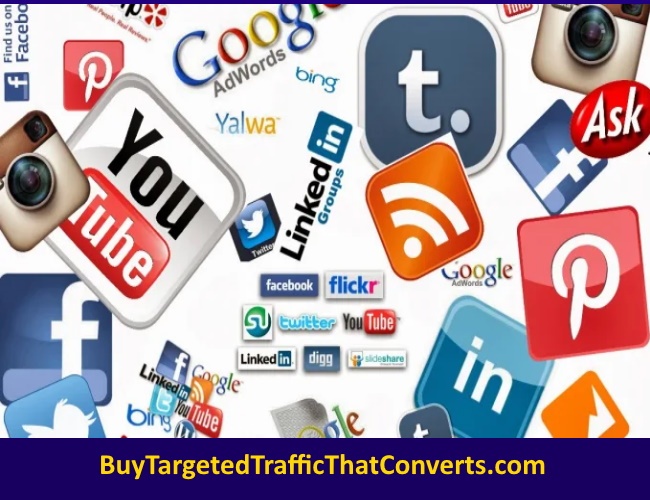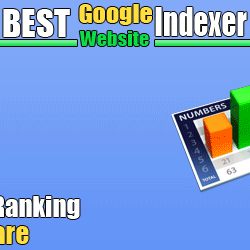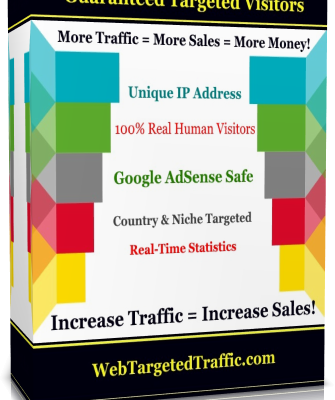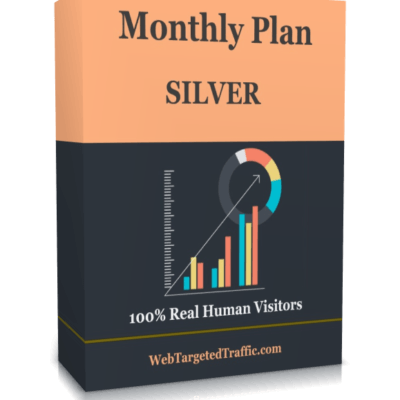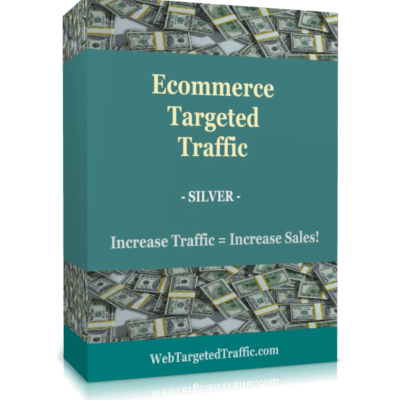There are countless ways to increase social media traffic. But just because a method works, doesn’t mean it’s cost-effective. If it doesn’t give you the right ROI, it doesn’t make sense for your business.
You can waste a lot of time and money chasing online strategies and trying so-called “secret” tactics that simply cost too much for too little.
Then there are techniques that are proven. When done right, they increase social media traffic. They help you meet revenue goals. They don’t burden you with acquisition costs that aren’t sustainable.
This is the kind of strategy your small business needs. Here’s how to get this done.
Table of Contents
Get It Now with Facebook Traffic Campaigns
Are you having trouble getting noticed on social media? It’s frustrating. If you don’t have followers, almost no one sees your content. If no one sees your content, it’s hard to gain any momentum.
Social media traffic campaigns are the answer. You could spend several months very slowly increasing impressions and gaining followers. But time is money.
Getting that traffic now is worth the cost if you’re attracting high-quality traffic. That’s traffic that engages and re-engages. It includes a high percentage of people who becomes followers, subscribers, customers or whatever your goals might be.
How to Use Traffic Campaigns to Get High-Quality Social Media Traffic
You need social media traffic. And acquisition costs are generally justifiable if you set up your campaigns correctly. Creating highly targeted ads helps you do it.
Social media platforms like Facebook and Instagram allow you to show your ads or boosted posts to a very select audience.
Determine Your Audience
Start by considering who your audience is. If you’re an established business, use data collected about existing customers. Build one or several buyer personas. These include:
- Interests
- Goals
- Challenges
- Buying behavior
- Basic demographics – (Income, Education, Age, Gender, Location)
Next, look at your options in Facebook. If you don’t find a specific trait, consider how other traits may relate to it.
You have so many options here. Target by things like:
- Ages of their children and/or Parenting style
- Political affiliation
- Industry
- A Specific Employer
- Entertainment of choice
- Health habits
- And much more
You can even target based upon their upcoming events.
You’ll notice that your ad’s reach goes down as you become more selective. It feels like you’re intentionally losing potential traffic. Don’t you want to reach as many people as possible?
Yes. You do. Target to spend wisely. Reach more of the right people with the right message. That’s what targeting is all about.
Trying to reach too many people who aren’t the “right people” causes you to overspend on accidental clicks. People thought you were something else. They will never come back.
Retargeting Audiences
In addition to targeting using Facebook data, you can also use your own data. Create custom audiences by uploading your contact list. Facebook can show the ad to your contacts. The vast majority of them are on Facebook.
Or you can ask Facebook to send the ad to people who’ve already visited your page, liked it, followed you, etc.Why are you targeting people who already know about you? The answer is very simple.
It takes 7-13 touch points before someone becomes invested in your brand. They see you in searches, on social media and other locations. These touch points add up more quickly when you retarget this traffic.
An Adobe study showed that attracting traffic that has already visited can increase click-through by 400% and revenues by 200%.
If you have a contact list, this is a very effective strategy.
Create Look-Alikes
With look-alike audiences, Facebook combines your data with theirs. It shows the ad to people who have similarities to the people on the list.
If you have a high-quality contact list, the people in your contact list are your target. Facebook helps you find more people like them.
Create Your Ad
Traffic campaign ads most often show up within news feeds rather than in an ad space. This makes them feel organic. You look like a friend sharing something.
Consider this when creating the ad. It should encourage people to click. But the less it “feels” like an ad, the better. Instead, make it about the content. That’s why people click in social media.
Get that traffic first. Then focus on conversions through your website. Facebook is a huge driver of online sales. 52% of online purchases can be attributed back to a Facebook ad.
This traffic is valuable. It’s worth it play the long-game by increasing traffic first.
Analyze and Adapt
Some ads will be more effective than others. Listen to what the numbers are telling you. That’s the key to social media advertising.
Streamline Sharing and Visiting Links
Make it a no-brainer to visit your site and share your content with others. Capture that magical moment when a post, email, blog, video or other content form evokes an emotion. This emotion drives a person to click a link and/or share something with others.
But this moment is fleeting. People get quickly distracted. If they have to take a round-about to share something or visit, they won’t do it. It’s important to add share buttons and links in an effective way.
Share Buttons
Make those share buttons highly visible and easy to use with logos that social media users instantly recognize.
You’ve probably stumbled upon some websites that created their own social media buttons. But is it recommended? Will it affect your number of shares? Truth is, there are pros and cons in customizing your social media sharing buttons. Yes it can surely make the buttons stand out and be more eye catching compared to the default buttons. However, if the design is too foreign that it’s too hard for users to recognize them, then they might just overlook them altogether.
Ensure that those social media buttons look great on mobile and don’t distract by covering up text or overpowering the screen.
As much as 62% of social media time is now spent on mobile devices.
Clickable Links
Provide a clickable link. Whether they click a short-link, naked link (the link in its original form), text link or image, quickly take them where you’d like them to go.
Have Clickable Images
42% of images in content aren’t linked to anything. And yet, people naturally click images to go to the place you’ve invited them.
An unclickable image in an email leads to a momentary point of confusion. However brief, this misstep can sidetrack the clicker.
In a simple piece of content like an email, link that image to the same location the CTA goes.
Create Visible CTA Buttons
88% of people are more likely to take an action if you clearly tell them what you’d like them to do. That’s what a CTA is all about. It’s how you get more traffic to your website and social media accounts.
Make links obvious with a clear call to action button when the platform allows. Use active language rather than passive. Even though “click here” is technically an active CTA, it has a passive feel to people. It gives them no incentive to click.
Opt for CTA’s like:
- Get the eBook
- Enter to Win
- Start Getting Results
- Increase Sales 714%
In each case, these very active CTAs convey an immediate benefit for clicking.
Create a Sharing Cycle
Integrate social sharing into every marketing channel you use:
- Website
- Emails
- Apps
- Other Social Platforms
Maximize every marketing channel to drive traffic to another channel. Get compound interest out of sharing by creating a share cycle.
Each touch point leads the person to take an action that increases traffic on another channel. But this isn’t just low-quality traffic.
This is engaged traffic. They’re taking part in the cycle that you’ve created.
Because of it, they’re exposed to more branded touch points.
It keeps you top of mind. You have more opportunities to turn this engagement into revenues based upon your business model.
But be careful with this strategy. Be honest with yourself about your capacity and budget. It’s possible to spread yourself too thin trying to be everywhere. It can make your brand seem very insignificant in each location.
Start by adding the buttons and links where you already have touch points like blogs, newsletters, etc.
Start Guest Posting
Guest posting on reputable sites your target visits and trusts is a great way to drive social media traffic.
This website has already done the work by increasing their own traffic. Using this bypass gives you a traffic infusion you’d have to work months or sometimes years to achieve through other methods.
Like all of these strategies, there are some best practices to follow to get the most social media traffic and website traffic out of the arrangement. Here’s how it’s done.
Set Some Criteria
There are endless places you could put a “guest post” or something like it. Get clear about what kind of site you want to post on. Here are 5 things to be on the lookout for:
- The site should get decent traffic. By publishing on this site, you are more or less guaranteed to get a lot of traffic to that post. Can’t tell if it’s getting traffic? There are tools that will estimate a website’s traffic since you don’t have access to the real numbers. Similar Web will give you a snapshot of the site traffic and then link you to more details about what channels the traffic comes from.
- People should be engaging with the site. The brand has a social media presence. People are liking, sharing, and commenting.
- The site is reputable. A credible site doesn’t have a lot of spammy links from other sites or use unscrupulous techniques to get social media traffic or website traffic. It isn’t overrun with ads. You can use the free tool Moz Site Explorer to get an estimate of how authoritative Google considers the website to be.
- Think relevant. If you’re a local business, local non-competitors in your industry and local news sources are the best places to guest post. Schools, local event sites, etc are other great places to be. Whichever you choose, make sure the site and guest post are clearly relevant to your brand.
- The guest post can fit naturally. A natural post that subtly promotes your brand is key. Direct promotion is generally forbidden in guest posts. But your post does demonstrate your expertise on a topic. Showing your expertise on another site is the primary way guest posting drives social media traffic. They just discovered you because you’re present somewhere they go.
Be Clear About What You Want
If it’s not fully laid out in the guest post instructions, always make sure that the site allows you to list at least one social media account in your on-page bio. Use this space to briefly tell a reader who you are and give your credentials. Give them a reason to follow.
To get more out of each guest post, see if the site is agreeable to one “do follow link” in the post. This link will be directed toward your website. Links from high authority, relevant websites can increase your own website’s authority in the eyes of Google.
As you collect more of these links, it improves visibility and in turn website traffic from searches. This is a major part of SEO, which we’ll discuss a little later.
And finally, know that they probably won’t pay you for the guest post. The links are considered payment. If you chose the site wisely, they’re more than payment enough.
Be Wary of Unethical Activities
The links to your website and social media have value to you. Because of this, some sites will ask for $50-$1000 to publish your guest post. It doesn’t sound like much if you know you’ll get a lot of traffic. But this can indicate that the site is not selective with who they allow to post.
They may be “in it for the money” alone. You want to be on sites where people care about customer experience.
A site that’s only focused on money could be taking steps that cause that site to be penalized by Google down the road. That would hurt your website. Google recommends that you never pay for the right to guest post.
Your authoritative post should be payment enough. But this is a decision you’ll need to consider on a site by site basis.
Take Rejection in Stride
A selective process increases the value of a guest post to you. It’s also frustrating. Don’t be too upset if a website doesn’t want your guest post. Just move on. It can be modified and published elsewhere.
Always review what’s on a site and what they’re looking for. Reduce chances of getting rejected. And working with a reputable digital marketing company also reduces rejection risk.
They’ve developed partnerships with many businesses and websites to give client’s more guest posting opportunities. Given the legwork necessary to network with sites and get posts published, this is money well-spent.
Know What the Competition’s Doing
It’s simple. But it’s not easy… as the saying goes. You post great stuff on social media. People like and share it. You get more social media traffic.
If it doesn’t seem to be working like it should, you’ve likely forgotten a very important part of any marketing strategy … What’s the competition doing?
Your social media competitors aren’t only directly competing for your customer. They’re also competing for their time.
To increase social media traffic, you need a good idea of what you’re up against. Ask some important questions. Get data-driven answers.
Where Is your Target Spending Their Time?
If your target is spending time somewhere in your industry with a non-direct competitor, try networking with this brand to increase your own traffic.
If it is a direct competitor, learn what you can. Then either differentiate to establish your uniqueness. Or do what they do better. In the real world, you’re often doing a bit of both.
Who Is Visible for the Keywords/Hashtags You Use?
These are other profiles a person may click on in your space. This knowledge influences how you target and who you target. If a certain hashtag is too competitive, supplement it with a similar, less competitive one.
What’s the Data Telling Me?
Paid analytics tools will give you a more thorough picture of the competitive landscape. But you can do a lot manually if you have extra time on your hands.
Pull real data to better understand competitor strategies and develop your own.
Be a Magnet for the Right Audience
Driving social media traffic is all about creating a magnet that draws in your target audience. But there’s no one way to become a magnet. It takes research and planning as well as consistent implementation and analytics.
Start with researching who your audience is. Create written customer personas. Create and curate content for these avatars of your real customers. As you design content, keep this person in mind.
Pay attention to who’s interacting and how they’re interacting. As you do, you’ll learn how to create a stronger magnet.
Engage with Existing Followers
You may or may not have much to work with yet. Maybe you only have 100 followers on Facebook. Or you’re only getting 10 website visits a day.
When you have such small numbers, you may place all of your focus on acquiring new and more and better. But in the process, you ignore what you already have.
When existing social media traffic is engaged by a brand, they multiply, become more loyal, and often become paying customers.
Here are some of the top ways to engage.
Make It Interactive
Run contests, quizzes and surveys. These more interactive elements of social media work double-duty. They engage existing traffic and bring in new traffic. As you get more interactions and followers, you can even reward your fans with more to keep them loyal and engaged.
Respond to Comments
If people are taking time to comment, nurture that interaction. Not only will it mean something to the user. It shows that you’re engaged. More people will want to join the conversation.
Share Consistently
Get on a schedule. Your regulars should have an idea about when you update your blog and how often. They need to see content from you every day. At least half of this content should be created by you.
The other half can be curated. But when curating, always keep your goals in mind.
Create Inspiring Visuals
People are 40x more likely to share social media posts that have visuals like graphics, images, gifs, and videos.
Put some thought into the visuals that accompany your post. Add visuals that will amaze even the best photographers.
What feelings do those images stimulate? Do they draw attention? Do people want to click? If not, work on improving how you create visuals to meet your traffic goals.
Invest in SEO
SEO isn’t a gimmick. It’s a long-term strategy that makes your website as visible as possible. To see your traffic double, then triple and on and on, invest in smart SEO strategies that increase your visibility over time.
SEO includes what you do to your website like making it mobile-friendly, user-friendly and fast. It also includes how you engage people through content, funnels, CTAs, interactive elements and your navigation system.
The more flawless you can make the user experience, the better chance you’ll have of ranking high in search results in Google and other search engines.
SEO also includes the many things you do off the site like researching what the competition is doing. Which keywords are best to target? What kind of content should you be creating?
Social media and guest posting are a huge part of this “off-page” SEO. They help drive initial traffic to the website to show Google that you deserve higher ranking.
Google pays attention to how this traffic interacts with your website. How many people visit and whether they stay and click on other things tells them how authoritative you are among your audience.
That’s just one more reason that the quality of your traffic matters. You drive a 100,000 new visitors to your site. But only 1,000 were actually a good fit for your brand. It looks like you’re not providing a great experience and increases your bounce rate.
That’s reflected in how much traffic search engines send you.
Pay Attention to the Analytics
It’s worth stating again in a broader context. Pay attention to your numbers. Decide what to measure and how to measure it. Set clear, measurable goals and benchmarks. Through them, you can evaluate if what you’re doing is working.
Social media’s own analytics tools are free to use, such as Instagram Insights or Facebook Ads Manager.
Google Analytics helps you understand how people interact once they’re on your site. You might also invest in paid tools that give you further insight.
Get more traffic. See that traffic builds over time by watching how people interact with your posts and ad campaigns.
You’ll want to measure and set goals for the following on social media:
- Impressions
- Net follower increase
- Mentions — 96% of people talking about brands, don’t follow the brand. Mentions give you a much better idea of your brand awareness and reach.
- Shares & Comments
- Click-through-rate — How many people are clicking on your links. Most of these drive traffic to your website.
On your website, you need to know things like:
- How many new/return visitors?
- What’s your bounce rate? — People leaving your site without clicking
- What’s your dwell time? How long do people stay during a visit?
- Which pages are getting the most traffic?
- Where is traffic coming from? Google Analytics tells you which social media and other websites send traffic your way.
- What keywords are driving the most traffic? Using Google Search Console, another free Analytics software from Google, you can find out more about how keywords drive traffic.
- Are people visiting key pages like sales pages or other conversion pages?
- How do people navigate through the website?
Use this info. Optimize your social media channels and website to maximize traffic and then conversions.
Get More Social Media Traffic & Website Traffic with These Strategies
This is how to get more social media traffic. Run targeted Facebook campaigns. Attract the right people to your page. Engage that traffic to watch it multiply.
Include social media buttons and links to make sharing and clicking a natural response. Invest in SEO to generate more traffic through search engines.
Targeted Website Traffic | Targeted Affiliate Traffic | Email Marketing Traffic | Social Media Traffic | Best Casino Traffic | Targeted Bitcoin Traffic | Adult Traffic | e-Commerce Traffic | 30 Day SEO Action Plan | Organic Traffic | Cheap Targeted Traffic | Best Targeted Ads | Best Solo-Ads Vendors | Real Traffic Seller | Search Engine Traffic | High Authority Backlinks | FREE SEO Tools | Best Google SEO Software |
FREE URL Shortener Link | Best Targeted Leads | SECRET AFFILIATE MILLIONAIRE MasterClass | FREE Email Validation Service | FREE Email Marketing Service | Website Traffic Reseller | Targeted Affiliate Traffic | Email Traffic/Solo Ads | Buy E-commerce Traffic | Buy Social Media Traffic | Organic Keyword Traffic | Top Tier 1 Targeted Traffic |
Buy Push Notification Ads Traffic | Social Bookmarking Service | Targeted Mobile Traffic | YouTube Video Marketing | Search Engine Traffic | Cheap Targeted Traffic | Website Traffic Packages | 7 Days Rush Campaign | FREE Download | FREE Website Traffic |Cheap website Traffic | Best Consumer Review Website | Buy targeted traffic that converts | Increase website traffic | URL Shortener With Statistics | Best Consumer Complaints Website | Website Traffic Reviews
Final thoughts
The secret to organic social media reach is the same as the secret to ranking well on search engines. It’s all about optimization, user experience, and high-quality content. If you start thinking about your social media efforts in the same way you think about your SEO work, you’ll see the pieces fall into place.
Are you struggling to get social media traffic? We can help. Contact us today for a consultation.

